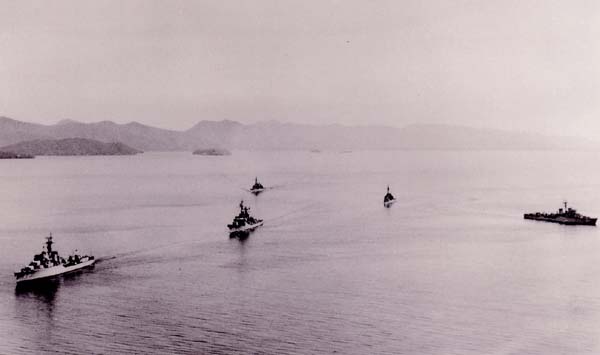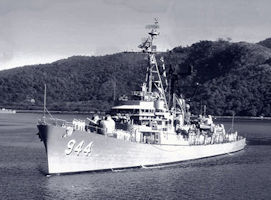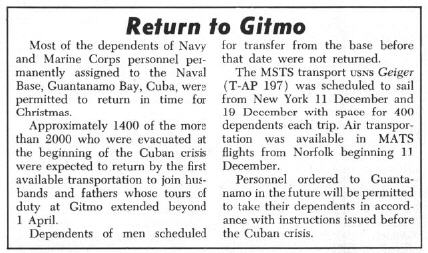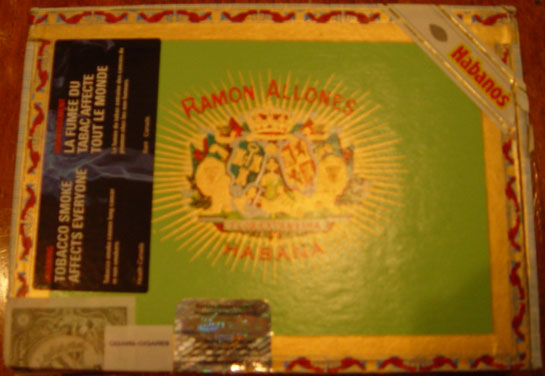
|
1962 - Cuban Missile Crisis
|

|

L to R: ARV Zulia D-21, USS Mullinnix DD-944, ARA Rosales D-22 (ex-Stembel DD-644),
ARA Espora D-21 (ex-Dortch DD-670), ARV Nueva Esparta D-11

|
1962 - Cuban Missile Crisis
|

|













  | The Virginian-PilotExcel as Envoys - Officer Tells Of Latin Tour18 December, 1962By "Cmdr. Harvey Shaw"USS Mullinnix DD-944 CO |
| 18 December 1962 - NORFOLK - "We didn’t buy them. We earned them with sweat, work and the ability of the American blue-jacket as an ambassador." That's the way Cmdr. Harvey Shaw summed up four months of work with Latin American navies and visits to South American ports.
Shaw, skipper of the destroyer Mullinnix, told a MACE (Military and Civilian Employees) Club luncheon in the Lafayette Yacht Club Monday how his 300-man crew won the affection of Latin Americans during the Hemisphere operation called "Unitas III." Like Unitas cruises in 1958 and 1961, the objective was to work out antisubmarine warfare techniques with Latin American navies, using three U.S. ships and a squadron of patrol planes. The real work at hemisphere understanding was done in port, however. The weapons were music and sports. In one Brazilian city, the Mullinnix sailors were challenged to a basketball game. The Brazilians fielded their Olympic team. The score was 112 – 12. "We might have lost on the score, but we won otherwise," Shaw said, when some 10,000 spectators swamped the Mullinnix team and carried it from the stadium on their shoulders. In Chili, the ships "rifle" team, using military issue guns, placed third. It competed against the No. 1 rifle team in the country. In Uruguay, a young Mullinnix sailor, with only high school track experience, placed third in a tough race and made the front page of the local newspaper. In another town, 15,000 Chileans wept while the U.S. band played their national anthem. "In our country," the commander said, "we are ashamed to wave the flag, but in their country we waved our flag and it was a wonderful thing." In Santiago, the capital of Chili, another Communist sympathizer asked the leader of the Mullinnix band, a chief musician, if the band would play for a Mississippi Negro audience if asked. "I'm a musician, not a politician. What would you like to hear?" the chief replied. |



